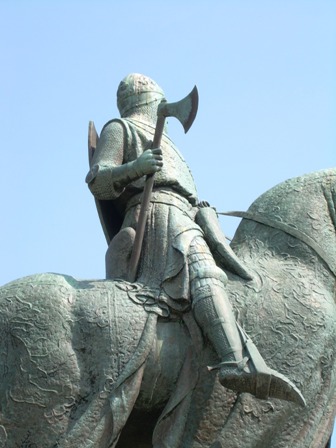| Jeremy V. Krause wrote: |
| Hi Craig,
Thanks for your reply. I have always known that I need a copy of this book but have never picked one up. Hopefully someone could post the pictures you speak of. Do you believe these "other than Danish axes" would have had similar length hafts. THis is very intriguing to me. Seems like something I will "have" to have a commission of eventually. Any weapon of thee 12th c. is primo for me! Also I would imagine that an axe of this type would have thereinforced edge shape we see on Danish examples- due to functuality and even more so due to construction. For me the ky is finding a smith who is comfortable with working with wrought iron as mild steel really doesn't look quite the same. I want iron on my commissions whenever I can get it. Thanks, Jeremy |
Jeremy,
I can't say for certain about the haft lengths. However, if you look at the Hurstwic axe photographed, you'll notice that the haft is much smaller than most of the ones seen on reproduction Danish axes. Obviously, the haft on the Hurstwic axe is modern, but it had to be made to fit the eye of the original axehead. Therefore, I would suggest that if the Hurstwic axe is at all indicative of this axe type, then it would be fair to say that the hafts are significantly smaller than those found on the typical Danish axe. According to the webpage, the Hurstwic axe weighs an incredible 1.7 pounds. As far as I can tell, it must be an extremely agile type of axe.
By the way, before you purchase Arms and Armor of the Crusading Era, there are two things you should know. First, all of the images are line drawings, including the various historical weapons depicted. So there's no photos. Second, the vast majority of images are taken from period artwork in the form of carvings, manuscript illuminations, and various illustrations of this nature. A lot of people who buy this book are disappointed when they realize it wasn't quite what they expected. So you should know in advance what you're looking at before buying it. On the other hand, it gives you an almost unparalleled look at various weapons, both antiques and medieval illustrations, from throughout Europe.
I've attached the three line drawings of the various axes. Also included is a typical Danish axe (Figure 106) for the purposes of comparison.
[ Linked Image ]
